2015 Yamaha WR250F First Ride Review
A YZ250F motocrosser in off-road trim
After riding Yamaha’s all-new 2015 WR250F at Cahuilla Creek Motocross Park in Anza, California, let’s just put it this way: If you’ve been waiting to sell your trusty pre-2014 Yamaha WR250F in the hope that Yamaha would introduce an all-new machine based around its AMA National Motocross Championship-winning rearward-inclined engine technology, the wait is over. It’s time to get your classified ad ready and get that old blue machine sold, because like its YZ250F sister, the 2015 WR250F is so radically improved that it practically obsoletes the previous model. It’s effectively a YZ250F that you can ride anywhere your trails take you. A year in the waiting – Yamaha didn’t sell a 2014 WR250F – the new WR’s 249cc DOHC four-stroke Single is virtually identical to the class-conquering 2014 YZ250F motocrosser, except that it’s tuned for enduro competition and aggressive trail riding and fitted with the required emissions and sound equipment to make it EPA-legal and CARB Green Sticker-certified.
2015 Yamaha WR250F
| Engine | 17.0/20 |
| Suspension/Handling | 15.0/15 |
| Transmission/Clutch | 9.0/10 |
| Brakes | 8.0/10 |
| Instruments/Controls | 5.0/5 |
| Ergonomics/Comfort | 9.0/10 |
| Appearance/Quality | 10.0/10 |
| Desirability | 9.0/10 |
| Value | 8.0/10 |
| Overall Score | 90/100 |
Its reversed cylinder head, rear-exiting wraparound exhaust and rearward-inclined cylinder are still the focal points of the design. The new layout accomplished numerous power-enhancing goals on the YZ250F, and these translate into a more effective WR250F. Reversing the head allowed Yamaha engineers to create a straighter intake shot to the combustion chamber, and afforded the room to design symmetrical intake and exhaust ports for more consistent velocities when the WR’s titanium intake and exhaust valves open and close. That means more efficient filling and scavenging of the combustion chamber. As a side benefit to the design, relocating the air filter up high in the WR’s faux fuel tank helps to keep the air filter cleaner longer and also prevents water from entering the airbox when negotiating water crossings.
The cylinder itself is inclined 6.2 degrees rearward and positioned to centralize mass by keeping the top-end weight and camshaft rotational inertia toward the center of the bike. It’s also offset 3.5mm forward of the crankshaft centerline to keep the connecting rod more vertical at the moment of greatest combustion force, which lessens power-robbing drag by reducing piston-to-cylinder wall side thrust, particularly at the rear of the cylinder. Less friction equals more horsepower. Since it is basically the YZ250F in off-road trim, it stands to reason that the WR engine features more similarities, including the move to a wet-sump oiling system, which reduces the engine’s complexity and adds to the compactness of the overall design by doing away with an external oil tank and lines. Its camshaft profiles, piston design and 44mm Keihin throttle body are also the same as those used on the YZ250F. But there are differences, the most obvious being that the WR’s engine cases are designed specifically to accommodate a convenient electric start system (there is still a kickstarter fitted as a handy backup) and also to house its all-new, off-road-worthy six-speed transmission, which features steeper ratios than the 2013 WR’s transmission. Less obvious is the revised clutch, which uses a different clutch plate material, springs, push lever and oil valve – all of these items are optimized for enduro competition and extreme trail riding. The same goes for the EPA-compliant ECU that is designed to keep the WR emissions legal and cannot be altered.
Naturally, there are WR-specific features, too, such as a slightly different decompression lobe on the exhaust cam so that it will work in concert with the electric starter, a resonator in the airbox to hush intake noise, and a USFS-approved muffler/spark arrestor to quiet the exiting din. There’s also an electric radiator fan to prevent overheating when riding slowly and/or in extremely hot conditions. On the ignition front, a large-capacity generator delivers 160 watts at 5000 rpm to power the WR’s lights and enduro computer and to keep its battery charged. The WR250F also comes with a factory-mounted, heavy-duty plastic skid plate to protect its engine cases and frame rails from rock damage. The WR’s all-aluminum bilateral beam chassis and removable subframe are virtually identical to the YZ250F’s in that they share the same 27.08-degree rake, 118mm trail and 38.0-inch seat height. The WR’s specs quote a 57.7-inch wheelbase, which is slightly shorter than the YZ250F’s 58.1 inches, likely due to the switch to a more off-road friendly 18-inch rear wheel instead of the YZ’s 19-incher.
However, the measurements may differ only by virtue of where their respective rear axles were positioned in the swingarm when they were measured. The only other notable difference lies with the WR’s 4mm thick engine mounts, which are 2mm thinner than the YZ’s in an effort to make the chassis more compliant over off-road bumps and rocks. Suspension is one area where the motocrosser and the enduro machine differ slightly, although they use the same hardware. Both feature an inverted 48mm KYB air/oil separate Speed Sensitive System spring fork up front, but the WR uses enduro-oriented valving and slightly lighter, 4.4 N/mm springs compared to the YZ’s motocross valving and 4.7 N/mm springs. Likewise, the WR’s KYB rear shock, which uses Yamaha’s proprietary Kashima coating to reduce stiction and features a large 50mm piston for better oil control, sports enduro valving and a 54 N/mm spring, whereas the YZ’s spring is a slightly stiffer 56 N/mm. Yamaha made an interesting choice when it comes to tire fitment on the WR, opting for Dunlop’s motocross-oriented Geomax MX52 Intermediate terrain tires front and rear rather than Dunlop’s signature AT81 off-road tires. Hmm … While our intro was held at Cahuilla Creek Motocross Park, our impressions were garnered not on the moto track itself but rather on an amazingly fun, 4-mile single-track loop that Yamaha laid out for us. The terrain included loose sand mixed with rocks small and large, drop-off ledges and large, ride-up-and-over-it boulders, giving us a good feel for the WR’s new power and handling and suspension capabilities.
Right off the bat, we appreciated how much more hearty the new WR motor feels compared to the old one, even though its airbox resonator and spark arrestor-equipped muffler keep the engine noise to a dull roar. Its 10-hole fuel-injector and ECU go a long way toward eliminating the starved feel that the old carbureted WR delivered, although the engine is still a little too lean right off idle for some of our tester’s tastes, requiring the rider to keep the throttle slightly above idle when negotiating tight terrain to ensure instant throttle response and avoid the occasional hiccup and stall. Feathering the WR’s clutch helps the cause, and the clutch is plenty stout to handle the abuse.
For closed-course competition, Yamaha offers an accessory WR Race ECU through its Yamaha Parts and Accessories Division. The WR Race ECU is identical to the ECU found in the WR’s all-new cross-country racing sibling, the YZ250FX. While it alleviates the off-idle flat spot, it also does away with the WR’s emissions-compliant status – caveat emptor or something like that. Beyond that minor irritation off the bottom, the WR delivers ample low-end lunge and a hearty mid-range that is aggressive without compromising traction. In fact, we were impressed with just how well the WR hooked up in the loose sand and grunted over rocks on our test loop. Rowing through its clean-shifting six-speed transmission revealed excellently spaced ratios that offer the rider a lot of flexibility when attacking a nasty section. It’s no open-class monster, but the WR produces enough low-end torque and mid-range snap to allow the use of a taller gear even when the going gets tight.
Even more than the engine, however, we loved the WR’s handling character, which is surprisingly light for a bike with a claimed 295-lb. wet weight. Thanks to the careful placement of its mass, which includes tucking its 2.0-gallon fuel cell under the seat, the WR steers with precision in low- or high-speed terrain without sacrificing stability. Plus, its slim layout and excellent ergonomics allow the rider to freely move side to side as well as fore and aft as needed to maintain momentum – a big help whether you are trying to make time in an enduro or off-road race or just keep up with your buddies on the weekend trail ride. Our test riders had a lot of fun darting through Cahuilla’s brush sections and blasting into the sandy berms aboard the WR250F. That said, feedback through the stiffer sidewalls of the motocross-oriented Dunlop MX52s isn’t all that great, but the tires are just squishy enough to avoid deflecting off rocks or roots. The WR’s suspension performance is very good for perhaps all but the highest-velocity desert riding. Its fork and shock were compliant at Cahuilla Creek, delivering a smooth, balanced and supple feel over rocks and tree roots, but high-speed G-outs tended to soak up a lot of the 12.2 inches of front and 12.4 inches of rear travel. If it were our bike and high-speed cross country racing was our thing, we might opt for slightly stiffer fork springs and crank some more preload into the rear end.
We had no complaints with the WR’s brakes. Its Nissin calipers with 250mm front and 230mm rear wave rotor-style discs offer plenty of stopping power without being overly sensitive in loose terrain. We particularly liked the strong yet linear feel of the two-piston caliper up front. Riders seeking more stopping power than the WR’s brakes offer should be able to get it with a simple pad swap.
All in all, the 2015 Yamaha WR250F represents a giant step forward in the 250cc off-road class. Whether or not it has the goods to give KTM’s super-tough 250 XC-W a run for outright top honors in the 250cc four-stroke off-road/enduro ranks is yet to be seen, but with an MSRP of $7990 vs. $8599 for the KTM, the Yamaha should prove to be a strong value in the class.
2015 Yamaha WR250F Specs | |
|---|---|
| MSRP | $7990 |
| Engine | Liquid-cooled four-stroke single, DOHC four-valve head |
| Displacement | 249cc |
| Bore x stroke | 77.0 x 53.6mm |
| Horsepower | N/A |
| Torque | N/A |
| Compression ratio | 11.8:1 |
| Fuel System | Keihin EFI, 44m throttle body |
| Ignition | TCI |
| Transmission | Six-speed |
| Final drive | Chain |
| Frame type | Bilateral beam aluminum |
| Front suspension | Inverted KYB fully adj. fork w/Speed Sensitive System; 12.2 in. of travel |
| Rear suspension | KYB fully adjustable monoshock w/piggyback reservoir, 50mm piston; 12.4 in. of travel |
| Front brake | Nissin two-piston caliper 250mm wave-style disc |
| Rear brake | Nissin single-piston caliper 230mm wave-style disc |
| Front tire | Dunlop Geomax MX52 80/100-21 |
| Rear tire | Dunlop Geomax MX52 12-/80-18 |
| Wheelbase | 57.7 in. |
| Rake | 27°08´ |
| Trail | 118mm |
| Seat height | 38.0 in. |
| Ground clearance | 12.8 in. |
| Wet Weight | 295 lbs. (claimed) |
| Fuel capacity | 2.0 gal. |
| Color choices | Blue & White |
More by Scott Rousseau



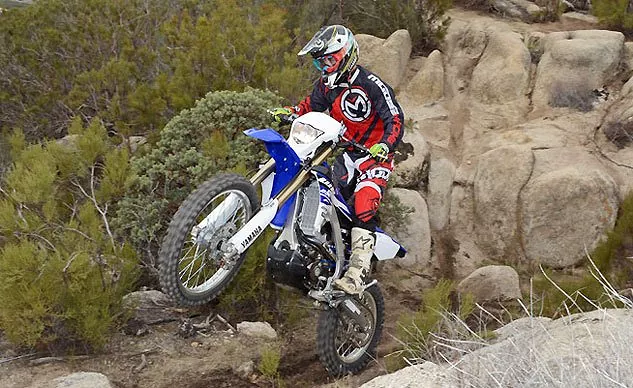
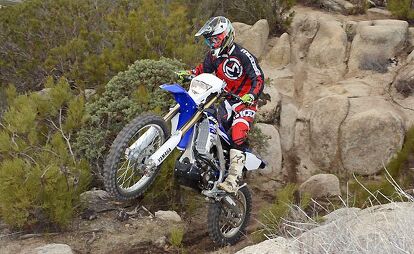


































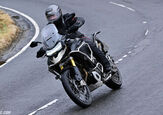
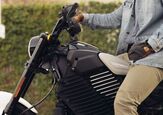
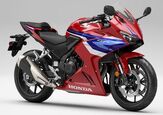


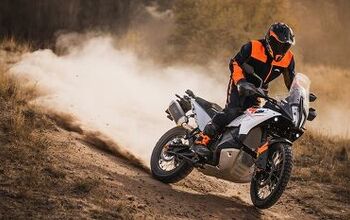
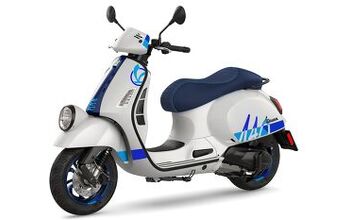
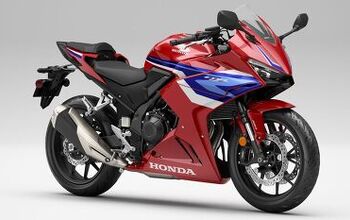
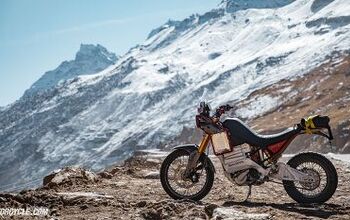
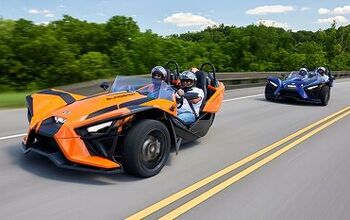
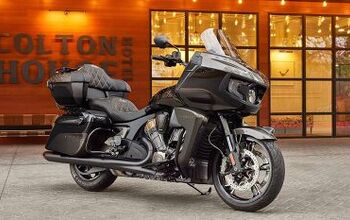

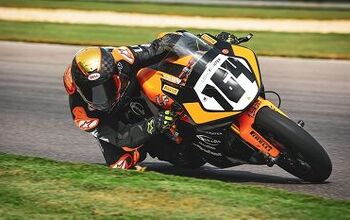

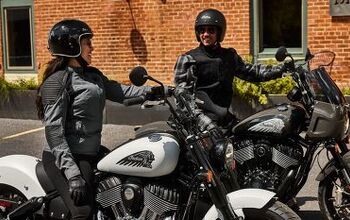
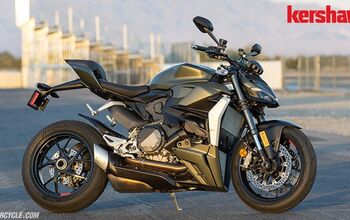
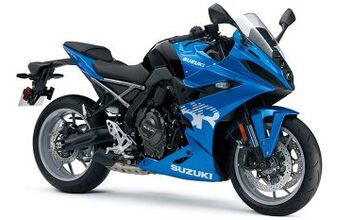
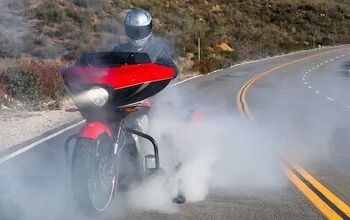


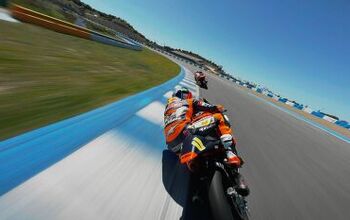
Comments
Join the conversation
Yep, 295 wet is what the WRR dual sport bike weighs. This bike is 40 pounds lighter.
Would love to ride one of these uncorked with the good ECU and proper exhaust. Sounds like a fun bike.
Always wondered why Yamaha always has to cork their enduro bikes up so bad, while KTM seems to manage compliance with the regs without overly restricting their bikes. It is not a big deal though, Yamaha sells the good ECU for $100. They practically beg you to buy it.
https://www.yamahapartsanda...
I have a 450 enduro, but I think I am going back to two strokes for my next dirt bike. Was out on the trails and took a spin on a '14 KTM 300 XC-W. That is an amazing machine. Best off road bike I have ever ridden, hands down. Feather light, magic smooth electric type power grunty motor that rips when it is on the pipe, handles like a fighter jet, great suspension, one finger Brembo brakes. The 300 is a sick ride and I want one!
Wow, 295 lbs! I was sold until I read that.